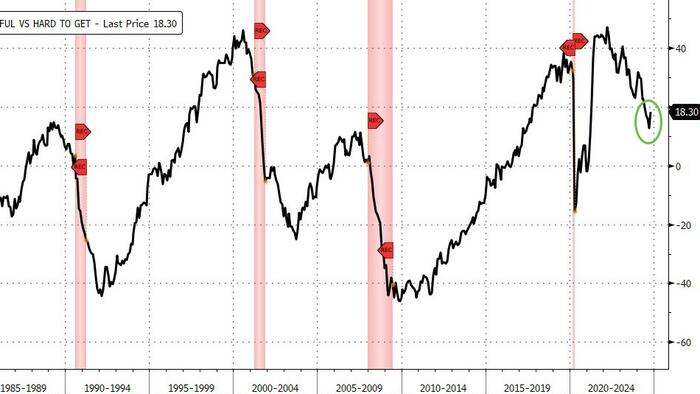In September, consumer confidence experienced its largest decline in three years, prompting analysts to forecast a modest recovery for October, based on the expectations expressed in The Conference Board’s report. Contrary to predictions, the results were remarkably positive, with consumer confidence soaring from a previous figure of 99.2 to an impressive 108.8, significantly surpassing the expected 99.5. This unexpected leap in consumer sentiment reflects a broader optimism among households, which is essential for driving economic activity. The data suggest that consumers are feeling more secure in their financial situations, despite the turbulence seen in the previous months.
Breaking down the components of consumer confidence reveals further encouraging trends. The expectations component, which reflects consumer outlook over the next six months, rose by 6.3 points to a value of 89.1, indicating improved sentiment regarding future economic conditions. Meanwhile, the present situation index, which gauges how consumers perceive current conditions, jumped over 14 points to 138. This marks the largest month-over-month increase in the present situation measure since May 2021. Such gains illustrate a notable shift in how consumers perceive both their immediate environment and the overall economic context.
Interestingly, survey respondents exhibited contradictory feelings regarding the economy’s direction. While there is an expectation of rising inflation and increasing bond yields, respondents also anticipate a rise in stock market performance. This dual sentiment might seem puzzling, as optimism about rising stock values typically runs counter to concerns about inflation and higher interest rates. However, it indicates a complex economic landscape where consumers are balancing their short-term anxieties with a long-term investment perspective, potentially influenced by their belief in resilient corporate profitability despite adversities.
The influence of the Federal Reserve’s recent interest rate cuts appears to be a significant factor in boosting consumer optimism. Although the Fed’s decision to cut rates was intended to stimulate economic activity, the immediate aftermath saw mortgage and auto loan rates actually increase. Despite this discrepancy, the allure of financing a car or home generated renewed enthusiasm among consumers. This situation underscores the delicate balance that characterizes consumer behavior in a rapidly shifting economic climate, where short-term financial conditions do not entirely align with consumer aspirations.
In addition to the general sentiment surrounding spending and investment, a closer look at labor market conditions revealed notable improvements. The Conference Board’s labor market indicator indicated a considerable enhancement in job availability and stability, following a troubling stretch of high unemployment and uncertainty. This uptick in job outlook is pivotal for sustaining consumer confidence, as employment stability is a critical factor in households’ spending decisions. Improved job prospects foster a sense of economic security, allowing consumers to commit to larger purchases despite fluctuating interest rates.
Despite the positive indicators surrounding consumer confidence and the labor market, these trends may not necessarily translate into further rate cuts by the Federal Reserve in the near future. The latest findings suggest a recovery narrative taking shape in consumer perceptions, but the interconnected issues of inflation, interest rates, and economic activity present a nuanced challenge for policymakers. In light of rising expectations and improved labor market conditions, it appears that further negative economic developments would be necessary to compel the Fed to reconsider its monetary policy stance significantly. The evolving consumer landscape showcases resilience but also hints at the complexities that lie ahead for both individuals and policymakers navigating the current economic landscape.

